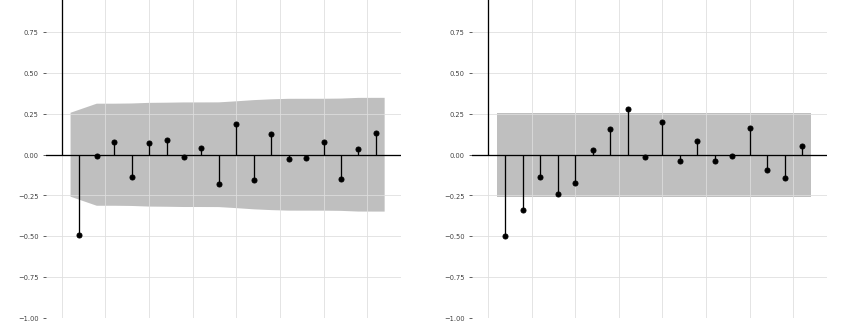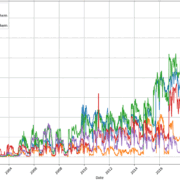AutoRegression in Time Series
Autoregression, often abbreviated as AR, is a fundamental concept in time series analysis and forecasting. It’s a model that relates a variable to its own past values. Autoregressive models are used to capture and represent temporal dependencies within a time series data.
Here are the key characteristics of autoregressive models:
- Lagged Values: In autoregression, the current value of a time series is modeled as a linear combination of its past values (lags). This means that the value at time “t” is a function of the values at times “t-1,” “t-2,” and so on.
- AR(p) Model: The order of the autoregressive model is denoted as “p.” An AR(p) model includes “p” past values in the linear combination to predict the current value. For example, an AR(1) model considers only the immediately preceding value, while an AR(2) model considers the two previous values.
- Autoregressive Coefficients: Autoregressive models estimate coefficients for each of the lagged values. These coefficients represent the impact or contribution of each lag to the current value.
- Stationarity: Autoregressive models work best when applied to stationary time series data. Stationarity ensures that the statistical properties of the data do not change over time. If the data is non-stationary, differencing may be necessary before applying autoregressive modeling.
The general form of an AR(p) model can be expressed as:
Xt = c + ϕ1Xt−1 + ϕ2Xt−2 + … + ϕpXt−p + ϵt
- Xt is the value at time “t.”
- c is a constant or intercept.
- ϕ1, ϕ2, …, ϕp are the autoregressive coefficients.
- Xt−1, Xt−2, …, Xt−p are the lagged values.
- ϵt is the white noise or error term.
Estimating the autoregressive coefficients (the ϕ values) and the order of the model (p) is done using various methods, including maximum likelihood estimation. Autoregressive models are a crucial component of more advanced time series models like ARIMA (Autoregressive Integrated Moving Average) and SARIMA (Seasonal ARIMA). They are used for understanding past behavior, making short-term forecasts, and capturing trends and dependencies in time series data.
Below is a sample code in Python for fitting an Autoregressive (AR) model to a time series using the statsmodels library. This code assumes that you have a time series dataset and want to fit an AR model to it.
import numpy as np
import pandas as pd
import statsmodels.api as sm
import matplotlib.pyplot as plt
# Generate or load your time series data
# Replace this with your actual time series data
# Example: time_series = [10, 12, 15, 18, 20, ...]
# time_series = ...
# Create a pandas DataFrame from the time series
df = pd.DataFrame({'value': time_series})
# Fit an AR model
order = 1 # Order of the AR model (e.g., 1 for AR(1))
model = sm.tsa.AR(df['value'])
results = model.fit(order)
# Print the model summary
print(results.summary())
# Plot the original time series and the fitted values
plt.figure(figsize=(12, 6))
plt.plot(df['value'], label='Original Time Series')
plt.plot(results.fittedvalues, label='Fitted Values', color='red')
plt.legend()
plt.title(f'AR({order}) Model Fit')
plt.show()
In this code: Replace the time_series variable with your actual time series data. The AR model is created using sm.tsa.AR from the statsmodels library. You can specify the order of the AR model using the order variable (e.g., 1 for AR(1)). Adjust the order according to the number of lags you want to consider. The ‘results’ variable stores the results of the AR model fitting. The code then prints a summary of the model, including coefficients and statistical information. It also creates a plot showing the original time series and the fitted values from the AR model. You can further modify this code to use your own time series data and adjust the order of the AR model to fit your specific modeling needs.





